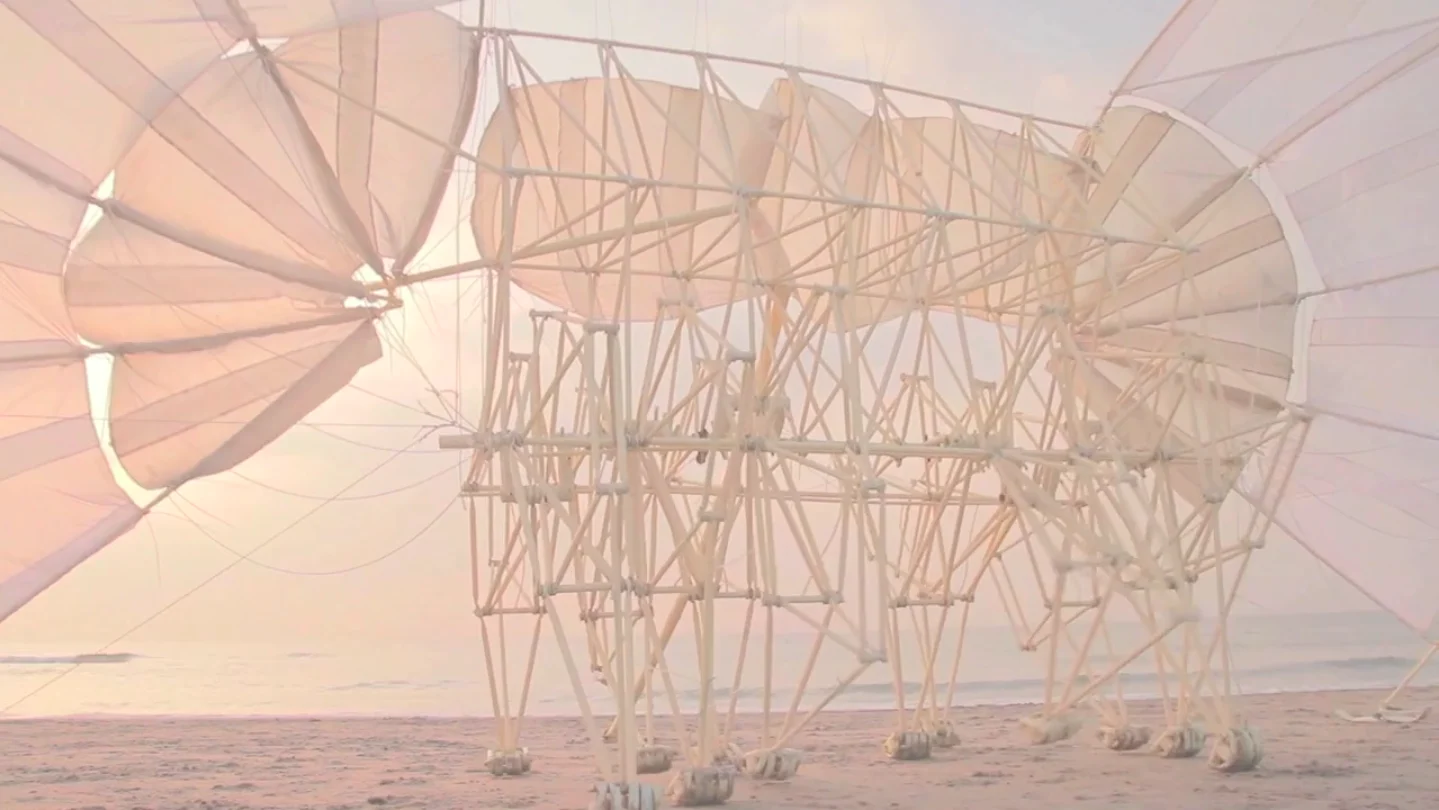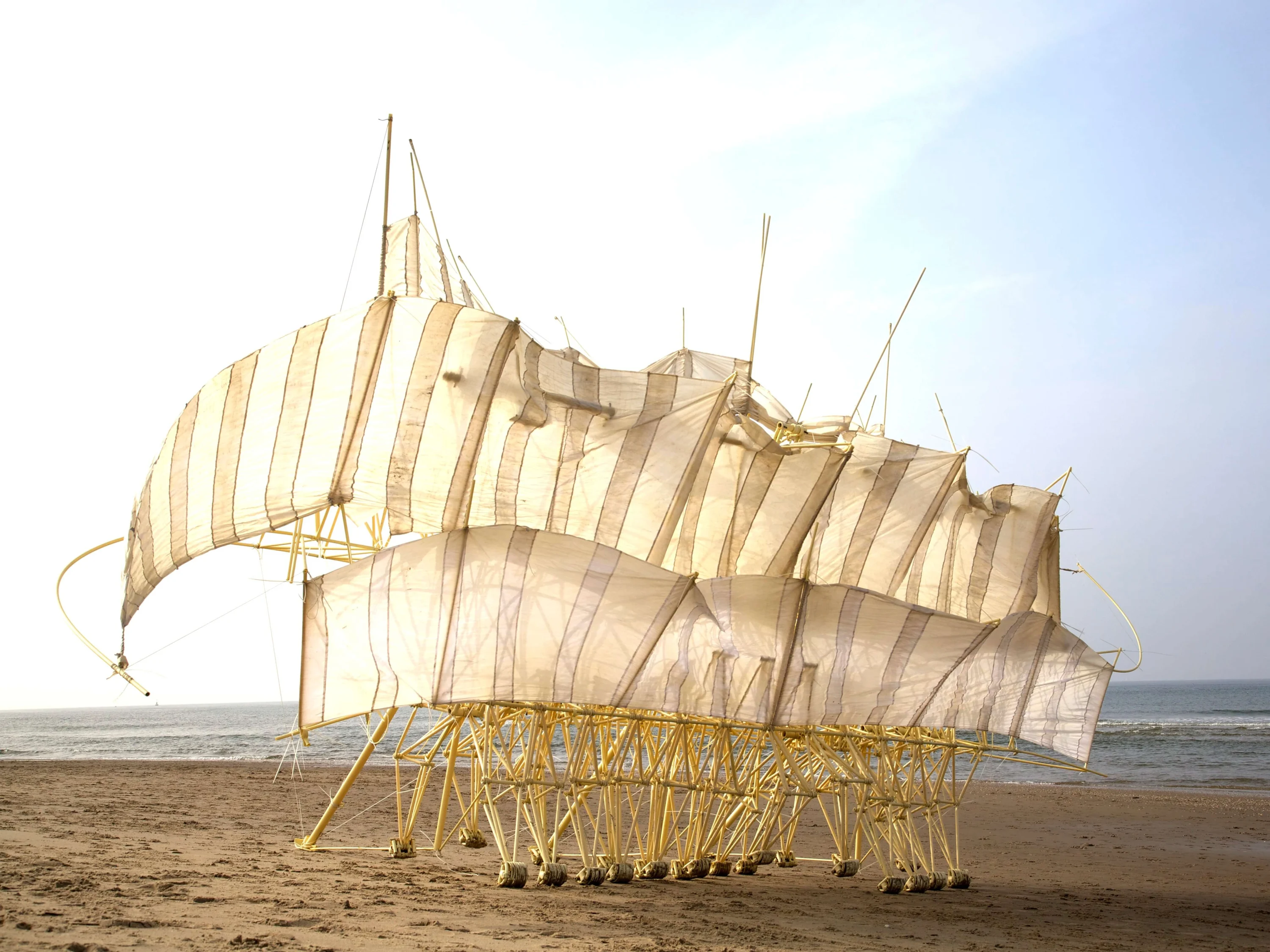

Born in the Hague, Dutch artist Theo Jansen creates huge animals out of PVC that walk the beaches of Scheveningen using the power of the wind, but he may not have expected to become an artist when he began studying Applied Physics at H Delft in 1968. In the 1980s, he wrote a regular column for the science supplement of De Volkskrant, a national Dutch newspaper, in which he explored “excursions in imagination.” One of these excursions involved a fantasy of his, which could one day help protect The Netherlands’ coastline from rising sea levels: he imagined wind-powered skeletons placed on a beach driven by the wind which would gather sand to create dunes which would act as dams. Decades on, and that fantasy has inspired his main practice, the “Strandbeasts.” They might not yet fulfill the original purpose he’d pictured, but he spends his time evolving them in his workshop, making them bigger and better with every passing year, and his videos of them walking along the beaches of the Hague have gone viral multiple times. We spoke to him about his love affair with these beasts, and how their growth has parallels to the concept of real-world evolution.
The path I walk is very capricious and unpredictable, and in the end, when it’s finished, it turns out the PVC tubes have better ideas than I do. It’s a dialogue. The tubes start talking to you after a while if you listen.


